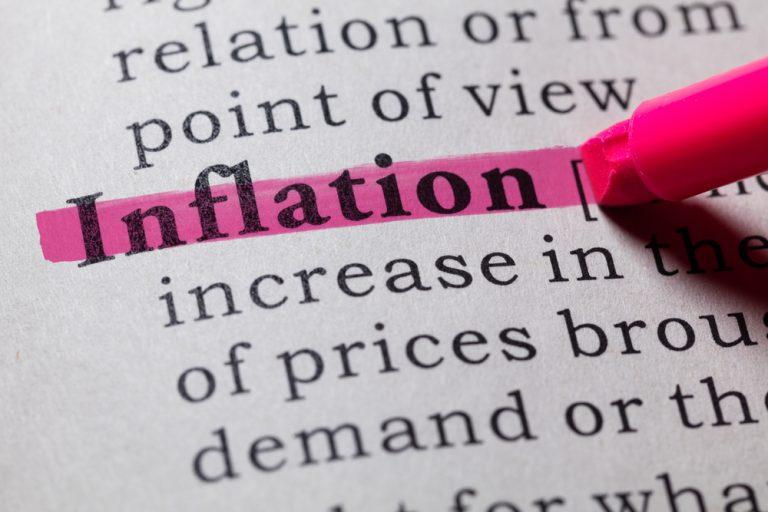
The Bank of England’s Mark Carney recently suggested that inflation, sometimes known as ‘the silent thief’, may be close to 2.8 percent by the second quarter of 2018. Since the result of the European Referendum at the end of June, and the following drawdown in sterling, inflation has never been far from the conversation in investment circles.
The burgeoning resurrection of inflation began in 2015 when the oil price regained its volatility, and real-life signs of a post-Brexit leap hit the headlines in October with the very British concern over the cost of Marmite.
More specifically, concerns over who should be bearing the burden of the increased cost caused by the translational effect of the weakened pound. The effects of rising Consumer Price Inflation (CPI) spread further than the breakfast table and a much weaker currency and higher oil prices will continue to affect UK consumers over the next 12 months and beyond.
Recent estimates from asset managers and economists have indicated that the UK will endure inflation of anywhere between 2.5 percent and 5 percent over the next year. However, the most likely figure (barring a significant move in sterling) is probably around the lower end of this range. CPI has remained well below the Government’s official target of 2 percent for some time, meaning that investors have not had to contemplate protecting against its capital-eroding effects over the last few years – but that is about to change.
In typical periods of rising inflation the Bank of England would be expected to increase interest rates, but this is not likely to be the case. Governor Mark Carney has stated that the institution is likely to “look through” an inflationary overshoot to support the economy and avoid stifling the UK’s recovery.
Against this backdrop investors are faced with the prospect of potentially having to achieve returns above 3 percent from their assets just to maintain the purchasing power of their capital. Traditional safe havens in inflationary times have included gold (which tends to rise in inflationary times), index-linked gilts (that track the rate of RPI, or Retail Price Inflation, which includes housing costs) and property (as premises often have inflation-linked annual revisions on rents). All these assets have received more attention from investors lately. Naturally, these investments all have their own risks:
Gold has a questionable valuation, no yield and could come under significant pressure if the US dollar continues to appreciate (as the Federal Reserve continues its hikes); index-linked gilts provide a ‘call-option’ on inflation but are irrevocably attached to an asset with a very high valuation; and property funds have well-publicised issues surrounding their liquidity this year, though they do possess the enviable diversification benefit of not being a share or a bond.

So which assets should investors use to seek shelter from the inflationary storm?
Infrastructure
Much has been said about infrastructure in recent months. The Chancellor, Philip Hammond, alluded to this as part of a fiscal stimulus package for the UK, and President-elect Donald Trump has promised spending in this area. The associated multiplier effects of such developments should also help to boost employment, spending and confidence. Many infrastructure assets, such as investments in ongoing transport and energy projects, have inbuilt inflation protection and the returns from the yields alone may outpace CPI.
Some collective schemes operating in these areas have already seen significant price increases this year, but opportunities look attractive in both open and closed-ended structures.
Index-Linked Corporate Bonds
While we might want to avoid some potential capital losses in UK sovereign fixed income, the outlook for corporate bonds looks significantly better. Inflation-linked issues in the UK credit market are not hugely numerous but some funds, like those run by M&G and Insight, may synthesise these by purchasing an index-linked gilt and using Credit Default Swaps (CDS).
Global inflation-linked funds are also available, but may not provide as appropriate protection.
Equities and High-Yield Bonds
Aside from the ‘alternatives’ universe, global equities and high-yield bonds have both provided a return higher than inflation in the past, but the associated risks (such as volatility and default) tend to be higher and, as ever, appropriate diversification is key.
Inflation looks to be inevitable, but it almost certainly won’t be handled the same way it previously has been, and central banks will stay on the sidelines rather than raise rates. Protection from the so-called thief is a good idea, but we must be wary of the unintended consequences of jumping into some traditional safe havens.
Tom Sparke IMC CertPFS (DM), Investment Manager, Gibbs Denley Financial Services This post is sponsored by Gibbs Denley Financial Services Limited is a Chartered Financial Planner based in East Anglia, with over 25 years in business. Tom Sparke heads up their in-house Investment Management team, which operates discretionary risk-rated model portfolios for individual and corporate clients.
